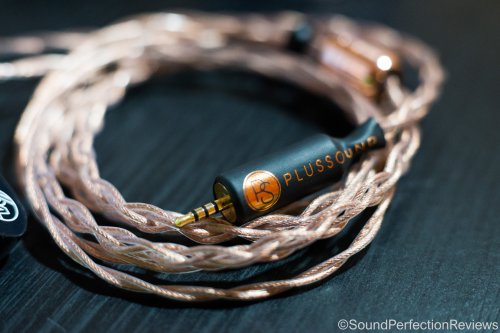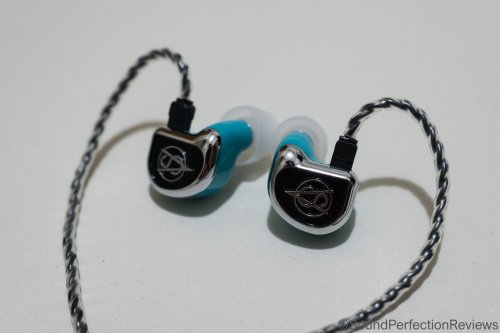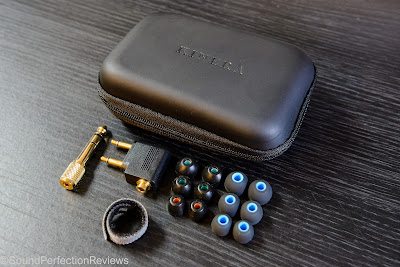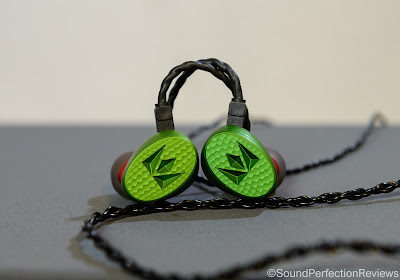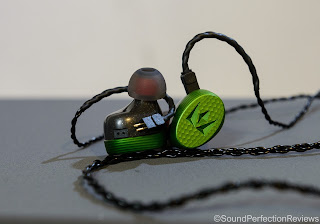Firstly I would like to thank Kinera for sending me this sample for review, these received over 50hrs of burn-in.
*disclaimer: This sample was provided for the purpose of writing a review, no incentive was given to write a favourable review. All opinions expressed are my own subjective findings.

Gear Used:
HP Laptop > iFi Nano iDSD BL > Earbud
iBasso DX200 / Audio Opus #2 > Earbud
Build Quality and Accessories:
As these were a limited edition item, they did not come in any retail packaging. They came in their carry case only.
The earbuds are well built using strong plastics, and a colour changing, glittery finish. The jack is hand soldered, and has a high quality jack with my name engraved on it, the cable itself is a 4-core cable that is plain black but very soft and comfortable in use. There is a metal y-split but no chin slider.
They come with a carry case and some foam covers that make them more comfortable and also sound slightly better. There is a black pair of foams, a pair where one is blue and one is red, and another pair with an opening in the middle which again changes the sound slightly.

Comfort:
It has been a long time since I last used earbuds, and it is a bit odd wearing them again, but once in place they stay secure and are comfortable to listen to for long periods of time. They are perfect for using when you don’t want to be fully isolated from the outside world. This does mean they leak a fair amount if you listen at louder volumes.

Sound:
These little earbuds are not very sensitive, and due to this need a fair amount of power to sound their best. I found them to work very well out of the iFi Nano iDSD BL personally.
I also preferred the sound of the earbuds with the included foam covers attached, as they became a little thin sounding without them.
Lows: Now the bass doesn’t have bottomless extension and huge sub-bass, but it does have control and a certain amount of punch. What I have found with these is that they focus on an accurate bass representation. The bass is not lacking but it isn’t boosted like a few IEM’s I have used. The bass actually has excellent articulation and presentation, but outside noise will take this away quite quickly.
Mids: The midrange is slightly forward on these, and is not a warm lush presentation; instead it brings a clear and crisp tone. This is not to say the midrange is dry and devoid of body, it still has a slight smooth tone to it, but it does have good power and is well detailed. The layering in the midrange is superb; you can easily hear different vocal and guitar tracks in songs. The upper midrange to treble transition is smooth and without sibilance.
Highs: The highs on these are very well presented; they are not pushed back but have good directional cues and great imaging. The highs have good impact but it does roll off a little early in terms of extension, lacking in that final bit of air up top. The highs are not splashy or uncontrolled, they are smooth and accurate.
The soundstage from these earbuds is actually very impressive, with good width and ok height, there are out of head moments to be had for sure. Separation is a strong point of these, easily picking apart complex mixes.

Conclusion: These unfortunately were a limited run of earbuds from Kinera, and are not available for purchase. It is a shame, as they sound very good; the sound is on the balanced to mid forward side with excellent clarity and detail retrieval. They need a fair amount of power to reach their full potential but when powered properly they offer a spacious and well separated sound. Some may find them lacking in a little bit of body, but once you get used to the sound, they offer an engaging and smooth sound.
Sound Perfection Rating: 8/10 (A great earbud with excellent clarity, but lacking a tiny bit of body)
*disclaimer: This sample was provided for the purpose of writing a review, no incentive was given to write a favourable review. All opinions expressed are my own subjective findings.

Gear Used:
HP Laptop > iFi Nano iDSD BL > Earbud
iBasso DX200 / Audio Opus #2 > Earbud
Build Quality and Accessories:
As these were a limited edition item, they did not come in any retail packaging. They came in their carry case only.
The earbuds are well built using strong plastics, and a colour changing, glittery finish. The jack is hand soldered, and has a high quality jack with my name engraved on it, the cable itself is a 4-core cable that is plain black but very soft and comfortable in use. There is a metal y-split but no chin slider.
They come with a carry case and some foam covers that make them more comfortable and also sound slightly better. There is a black pair of foams, a pair where one is blue and one is red, and another pair with an opening in the middle which again changes the sound slightly.

Comfort:
It has been a long time since I last used earbuds, and it is a bit odd wearing them again, but once in place they stay secure and are comfortable to listen to for long periods of time. They are perfect for using when you don’t want to be fully isolated from the outside world. This does mean they leak a fair amount if you listen at louder volumes.

Sound:
These little earbuds are not very sensitive, and due to this need a fair amount of power to sound their best. I found them to work very well out of the iFi Nano iDSD BL personally.
I also preferred the sound of the earbuds with the included foam covers attached, as they became a little thin sounding without them.
Lows: Now the bass doesn’t have bottomless extension and huge sub-bass, but it does have control and a certain amount of punch. What I have found with these is that they focus on an accurate bass representation. The bass is not lacking but it isn’t boosted like a few IEM’s I have used. The bass actually has excellent articulation and presentation, but outside noise will take this away quite quickly.
Mids: The midrange is slightly forward on these, and is not a warm lush presentation; instead it brings a clear and crisp tone. This is not to say the midrange is dry and devoid of body, it still has a slight smooth tone to it, but it does have good power and is well detailed. The layering in the midrange is superb; you can easily hear different vocal and guitar tracks in songs. The upper midrange to treble transition is smooth and without sibilance.
Highs: The highs on these are very well presented; they are not pushed back but have good directional cues and great imaging. The highs have good impact but it does roll off a little early in terms of extension, lacking in that final bit of air up top. The highs are not splashy or uncontrolled, they are smooth and accurate.
The soundstage from these earbuds is actually very impressive, with good width and ok height, there are out of head moments to be had for sure. Separation is a strong point of these, easily picking apart complex mixes.

Conclusion: These unfortunately were a limited run of earbuds from Kinera, and are not available for purchase. It is a shame, as they sound very good; the sound is on the balanced to mid forward side with excellent clarity and detail retrieval. They need a fair amount of power to reach their full potential but when powered properly they offer a spacious and well separated sound. Some may find them lacking in a little bit of body, but once you get used to the sound, they offer an engaging and smooth sound.
Sound Perfection Rating: 8/10 (A great earbud with excellent clarity, but lacking a tiny bit of body)






















